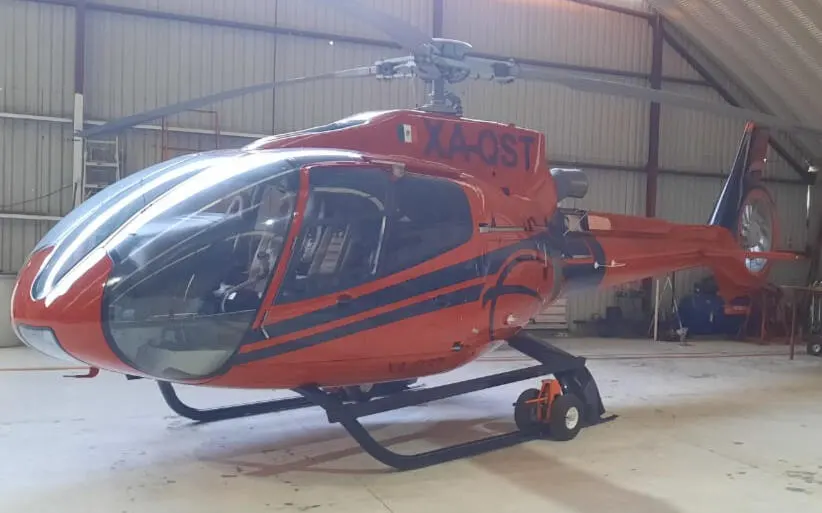EC 130
The EC 130 Helicopter’s Role in Mexico’s Aviation Landscape
The Airbus EC 130, a light single-engine helicopter, has established a significant presence in the global aviation market, with a particularly strong demand in the Latin American and North American regions. As of April 03, 2024, the EC 130 continues to be a preferred choice for various applications due to its versatility, advanced technology, and comfort. In Mexico, the EC 130’s adaptability makes it suitable for a range of missions, from VIP transportation to emergency services, aligning with the country’s diverse aviation requirements.
The EC 130’s design is a derivative of the earlier Eurocopter AS350 Écureuil, featuring a spacious cabin and a Fenestron tail rotor for noise reduction, which is particularly beneficial for tour operations in noise-sensitive areas. The helicopter’s introduction to service with Blue Hawaiian Helicopters in 2001 marked the beginning of its success story, which has since seen the EC 130 become a popular choice for aerial tours, including scenic flights over regions such as Hawaii and the Grand Canyon.
In Mexico, the EC 130’s operational history is marked by its use in various sectors, reflecting the country’s growing aviation industry and the need for reliable and efficient air transport solutions. The Mexican Air Force has historically utilized a range of helicopter assets for support tasks, and while the EC 130 is not explicitly mentioned in their fleet, the type of missions it supports aligns with those undertaken by the Air Force and other government agencies.
The EC 130’s safety features and low-noise profile make it an attractive option for operators, and its presence in Mexico is indicative of the country’s commitment to modernizing and expanding its helicopter fleet. This commitment is further underscored by the Mexican aviation industry’s efforts to enhance surveillance, light attack capabilities, and rapid troop transport in response to internal security challenges, such as the ongoing Mexican Drug War.
Overview of the Airbus Helicopters EC-130 in Mexico
Design and Features
The Airbus Helicopters EC-130, also known as the H130, is a single-engine light utility helicopter designed for a wide range of missions, including passenger transport, sightseeing, medical evacuation, and law enforcement. The EC-130 features a spacious cabin that can accommodate one pilot and up to seven passengers. It is equipped with a Fenestron tail rotor, which enhances safety and reduces noise levels, making it particularly suitable for operations in noise-sensitive areas such as tourist locations. The helicopter’s design emphasizes passenger comfort and visibility, with large windows providing panoramic views. (Airbus)
Performance and Specifications
The EC-130 is powered by a Turbomeca Arriel 2D engine, which provides reliable performance and a high level of safety. The helicopter has a maximum takeoff weight of approximately 2,500 kilograms and can reach a top speed of 240 kilometers per hour. Its operational range is around 610 kilometers, with a service ceiling of 7,000 meters, allowing for versatile operations across diverse environments. The EC-130’s advanced avionics suite includes a Vehicle and Engine Multifunction Display (VEMD) for simplified cockpit management. (Flugzeuginfo)
Operational History in Mexico
In Mexico, the EC-130 has been utilized for various purposes, including tourism flights over scenic areas such as the Mayan Riviera and Copper Canyon. Its low noise footprint and comfortable cabin make it a preferred choice for operators catering to the tourism industry. Additionally, the EC-130 has served in roles supporting law enforcement and emergency medical services, aiding in Mexico’s efforts to provide rapid response capabilities in urban and remote areas.
Safety Record
The EC-130’s safety record is generally considered to be strong, owing to its modern design and advanced safety features. However, as with all aircraft, it is not immune to accidents. The safety of helicopter operations is influenced by factors such as maintenance, pilot training, and weather conditions. In Mexico, operators of the EC-130 must adhere to the country’s aviation regulations and standards to ensure the highest levels of safety are maintained.
Utilization of EC-130 Helicopters in Mexico
Emergency Medical Services (EMS) and Disaster Response
The EC-130 helicopters in Mexico have been instrumental in providing emergency medical services and disaster response. The Mexican government and state authorities utilize these helicopters for rapid medical evacuation and transportation of patients from remote or inaccessible areas. The helicopters’ versatility allows them to land in diverse terrains, making them ideal for rescue operations during natural disasters such as earthquakes and hurricanes. The ability to quickly deploy medical teams and evacuate casualties has proven to be a critical asset in saving lives and providing timely medical care.
Law Enforcement and Surveillance Operations
EC-130 helicopters are also employed by Mexican law enforcement agencies for surveillance and patrol missions. Their operational capabilities are suitable for border surveillance, anti-narcotics operations, and monitoring of illegal activities. The helicopters’ advanced navigation and communication systems enable law enforcement personnel to conduct operations effectively, even in challenging environments.
Support for Civil Protection and Firefighting
In the realm of civil protection, EC-130 helicopters offer substantial support in firefighting efforts, especially in areas where ground access is limited. Equipped with water buckets or tanks, these helicopters can perform aerial firefighting to combat forest fires, contributing to the preservation of Mexico’s natural resources and the protection of communities at risk.
Urban Mobility and Infrastructure Development
The EC-130’s role in urban mobility is emerging as cities in Mexico explore the use of helicopters to alleviate traffic congestion and improve transportation networks. The potential for EC-130 helicopters to support urban infrastructure projects, such as aerial surveys and transportation of materials to construction sites, is being recognized as a means to enhance efficiency in urban development.
Training and Development of Helicopter Pilots
Mexico has recognized the importance of developing a skilled workforce capable of operating EC-130 helicopters. Training programs for pilots and maintenance crews are essential to ensure the safe and effective use of these aircraft. Collaboration with manufacturers and specialized training centers provides Mexican pilots with the expertise required to handle the diverse missions that EC-130 helicopters are tasked with.


